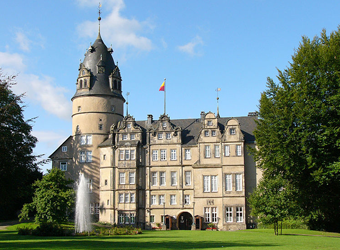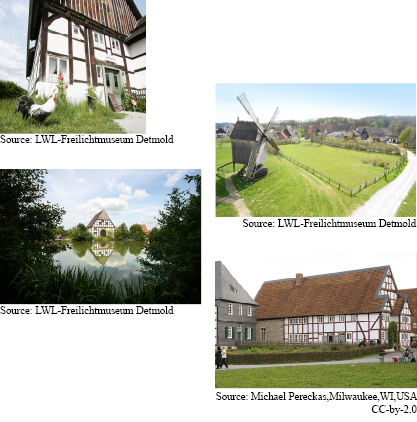
Social Events
Welcome Reception
|
|
Conference dinner and visit at LWL-Open-Air-Museum DetmoldConference Dinner at "Weisses Ross"
Visit at "LWL-Open-Air-Museum" The highlight of our visit will be a guided tour through one of the most famous parts of the museum, the Paderborner Dorf. Currently, the Paderborner Dorf or Paderborn Village is the largest assembly in the open air museum with approximately 40 buildings. It visualizes the daily life of a large village in eastern Westphalia in 1900. Big pile villages emerged in the region of Paderborn and the upper Weser river since the late medieval times. They were surrounded by large arable fields and a ring of fruit gardens and pastures. The buildings are mostly narrow gabled, half-timbered houses in four-column design with high outside walls. [Text: Based on LWL-Freilichtmuseum Detmold, Presse Info] |
|

